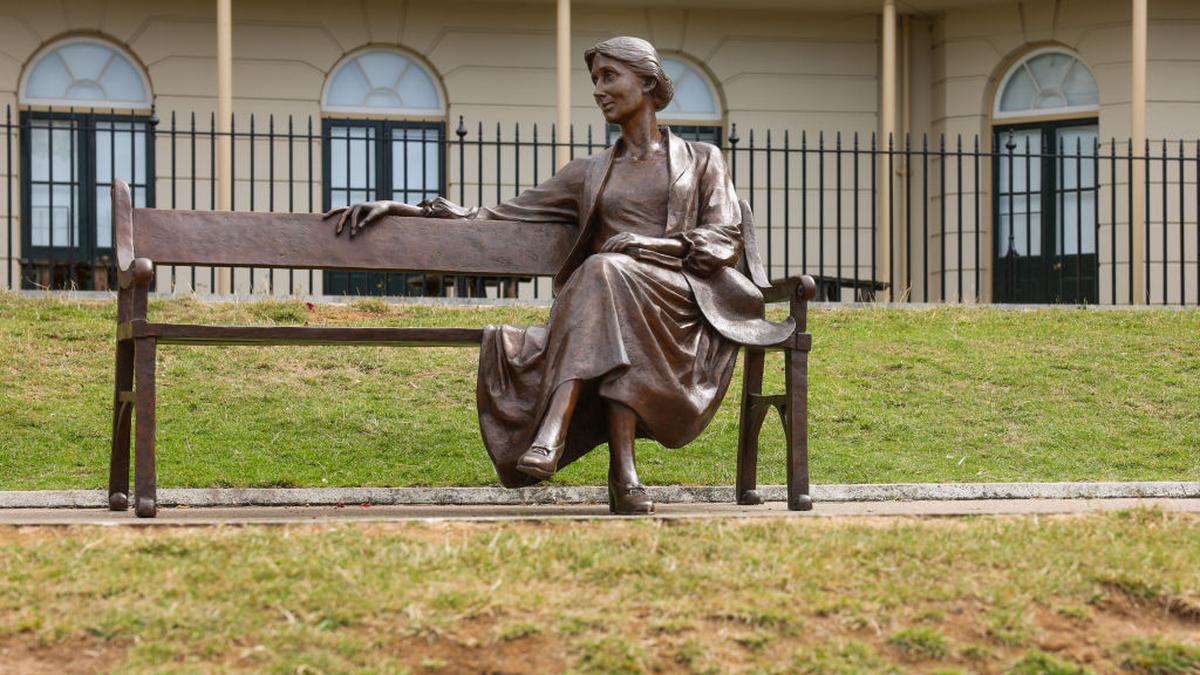
The power of ‘not’ | Notes from the 10th Symposium in the Literary Activism Series
The Hindu
Exploring the boundaries of non-fiction and fiction through essays, symposiums, and the intersection of AI and creativity.
Prefixing any straitjacketed definition with a defiant “not” can produce startling results. Much like Kabir’s ‘ulatbansi’ (upside-down sayings) or the Advaita philosophy of ‘neti neti’ (not this, not that), it is a stream of consciousness that moves beyond the blindspots of binary thought, resisting convenient categorisation.
Only fitting then that modernist writer Virginia Woolf was the toast of the 10th Symposium in the Literary Activism Series in New Delhi last week, centred on ‘the non-peer reviewed essay’, a work that is more spontaneous, imaginative, intellectual, “essayistic” and, more importantly, immune to slaughter at the conformist hands of “peer review”.
Jon Cook, Emeritus Professor of Literature at the University of East Anglia, said that the essay stemmed from a festering “self-doubt” when imperialist forces started digging their feet in foreign lands. For it to develop dialogue between the “philosophical eye” and “conversable crowd”, it needs the firm footedness of “experience”. He further quoted from a Woolf essay to describe the “transition, the invention of self”, that the form of the essay might facilitate.
Interesting assumptions, each one intersecting with, and adding to, what an essay can (not) entail, emerged from the two-day event, helmed by scholar-writer Amit Chaudhari. One panellist compared the Hindi variant ‘nibandh’ (one without any ‘boundation’ as he puts it) with its Bengali or Odia counterpart ‘prabandh’ (one with form). Poet-professor Sumana Roy believed the essay to be a way of ‘genre-defiance’, genre being a very masculine, rigid entity, while Yale University’s Cynthia Zarin thought it to be a container to hold discursive thoughts.
Dwelling on his decade-long engagement with the series, Chaudhari said the aim was to zoom in on intelligent, thoughtful, playful exchanges, to listen to them and learn from them. The extension of the symposium into a full-fledged online magazine, as well as a dedicated imprint which doesn’t bow down to market forces, are his ways of engaging with and chronicling these ongoing conversations. In the coming years, Chaudhari wishes for the symposium to move to Kolkata and other parts of the country, to “democratise knowledge and rescue these conversations from the stranglehold of academia”.
Is non-fiction only based on verifiable facts, and is fiction its made-up version? Is non-fiction (non) fiction, a dry and drab fact sheet sans narrative and storytelling, the two central tenets of creative writing? How do these forms interact and intersect with each other in a world dominated by free market capitalism? Chaudhari chose the cinematic equivalent of non-fiction — the documentary — to illustrate his point. In focus was Anand Patwardhan’s “bold and perspicacious” Ram Ke Naam (In the Name of God), based on the 1992 demolition of Babri Masjid in Ayodhya.
Chaudhari seemed least concerned with the historicity of the events; the quotidian shots of a milestone, an empty stretch of road, and two chatting farmers piquing his interest instead. These marginal people or objects, simultaneously in and out of the narrative, he said, offer a “looseness, unfinishedness, and distractedness to narrative” making the tale take a flight of its own, without the constrictions of genre, so that we, as viewers “trust the tale, and not the genre”.

When reporters brought to her notice the claim by villagers that the late maharaja of Mysore Sri Jayachamaraja Wadiyar had gifted the land to them, Pramoda Devi Wadiyar said she is not aware of the matter, but sought to assure people that no effort will be made to take back the land that had been gifted by the late maharaja.





















 Run 3 Space | Play Space Running Game
Run 3 Space | Play Space Running Game Traffic Jam 3D | Online Racing Game
Traffic Jam 3D | Online Racing Game Duck Hunt | Play Old Classic Game
Duck Hunt | Play Old Classic Game










